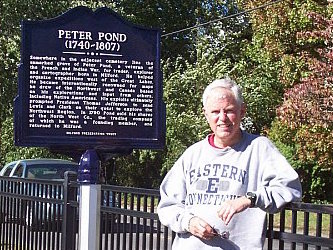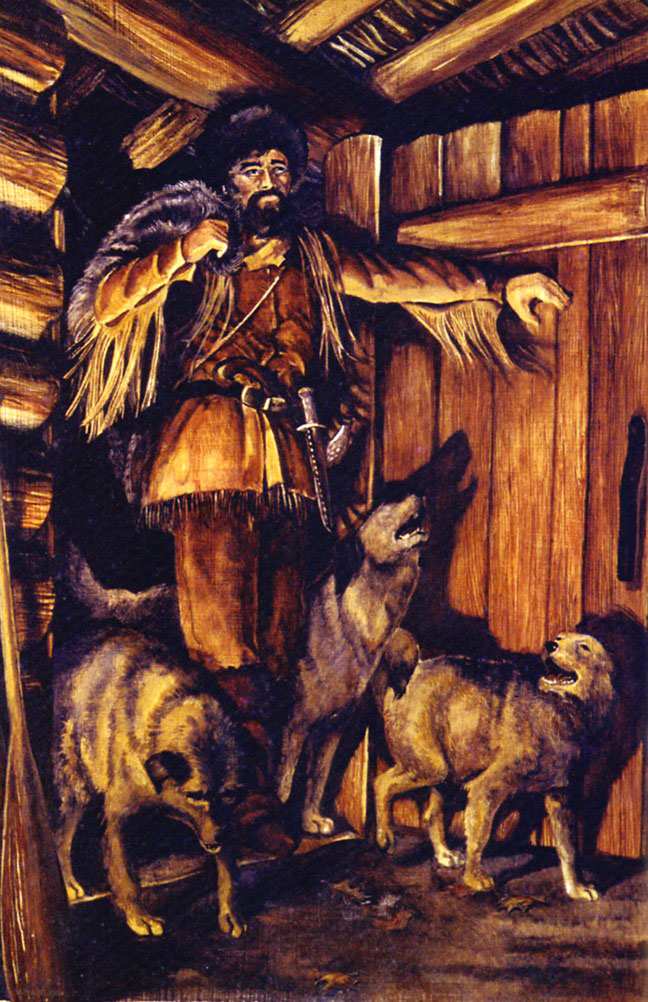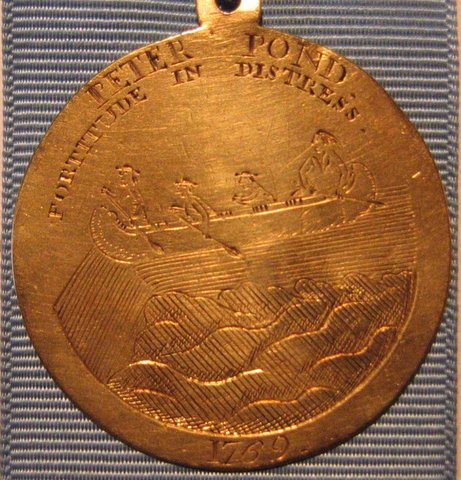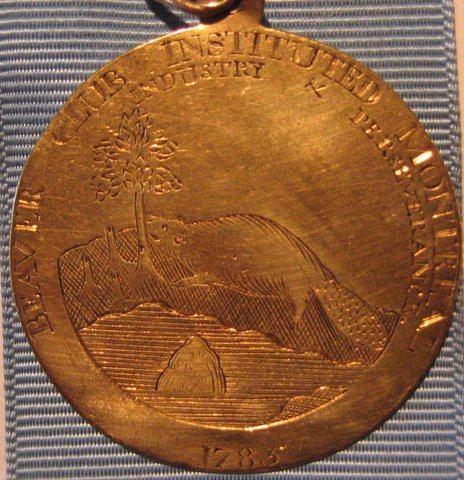Peter Pond newsletter :: AUGUST 2000 :: #2
BEAVER CLUB MEDAL
I said last time that newsletters would come out as material warrants, and I think a recent development merits number 2. A society member among us possesses Peter Pond's Beaver Club medal. That's as far as I'll go on identity, since the person wishes to remain anonymous. Why do I believe this person? It's like this. I have seen the medal and held it in my hands. I found out about its existence and that it wasn't too far from me in the fall of 1988, after my Peter Pond Pilgrimage to Saskatchewan and Alberta in July. I only made one visit and later lost track of the person. The one who had it then has since died and the medal passed to another family member. I started Peter Pond Society in May and through the Internet established contact with the current medal holder.
So where to go from here? Mainly rejoice the medal is still around and has not been lost in the cracks of time like about 60 percent of the others from the height of the Beaver Club membership that numbered about 100. About 20 medals are known to exist today, most of them in museums. This is one of five still in private hands.
Probably an explanation of the Beaver Club is in order. My information comes from the 36-page pamphlet, "The Beaver Club Jewels," written by Larry Gingras in 1972 for The Canadian Numismatic Research Society. I have a copy for a month on interlibrary loan from the Vancouver (BC) Public Library. The club was the exclusive men's club of Montreal in the late 1700s and early 1800s. It was a way for officers of the North West Company to get through the winter, with bimonthly meetings at various restaurants, before the business of the fur trade resumed in the spring. Membership required spending a winter in the Canadian woods. Peter Pond was a charter member among 19 when the club started in 1785. This is seen by the fact that the year 1785 is stamped on his round medal, all of which were made of gold and had the member's name curved along the top on one side. All medals were engraved by hand, so no two were alike. These were the name tags of the day, as done at Rotary or Kiwanis meeting today. And like those current meetings, anyone caught without his Beaver Club medal was fined a dollar for not wearing it.
Club members and guests basically included the period's movers and shakers in North America. Pond's fellow members included: Sir Alexander Mackenzie, his cousin Roderick McKenzie, James McGill, Alexander Henry, Simon McTavish, Sir George Simpson and all the Frobishers -- Benjamin, Joseph and Thomas. Distinguished guests included: Sir John Franklin, Lord Selkirk, Washington Irving, and John Jacob Astor.
Descriptions of some "meetings" are legendary. After dinner, members sometimes would sit on the floor, one behind the other like in a canoe, grab pokers or canes and go through paddling motions while singing voyageur songs. Revelry could go to 4AM with war-whoops and songs and occasional broken bottles and glasses. One guest wrote, "I was afterwards informed that 120 bottles of wine had been consumed at our convivial meeting, but I should think a great deal had been spilt and wasted."
Gingras made sure to add, "It would be well to point out that the details bought out in these accounts refer primarily to the activities of those who remained on after the more sedate members and guests had called it an evening."
The book lists every member of the club during its existence from 1785 to 1827. Probably the most interesting part is pictures of 18 medals as they were known to exist and their whereabouts in 1972. Most have the same basic design. One side has a beaver gnawing a tree and the words "Industry and Perserverance." The other side shows four men in a canoe and the words, "Fortitude in Distress" with the member's name on top. Some trees have branches, some don't. The canoe is about to go over a waterfall on some medals, on calm water in others. English speaking members had their "jewels" (as Gingras called them) engraved in English, French members in French. "My theory," Gingras writes, "is that the jewels were made from gold coins circulating in Canada at the time, such as the Doubloon of Eight Escudos of Spanish America. The coins would be shaved down to remove all designs and legends, and this accounts for their being so thin."
Each medal in the book has both sides photographed followed by a short biographical sketch of the member, and the medal's current location. Pond's medal is on page 33, one of those with a canoe about to go over a waterfall. The side with the beaver shows 1785 on the bottom, the year he became a member. The canoe side shows the year he spent in the interior, 1769, which Gingras found curious since the club's Rules and Regulations of 1819 show that year as 1770. And most historians agree Pond didn't head north into Canada after growing up in Milford, fighting in the French and Indian War and cutting his teeth in the fur trade in the Mississippi Valley, until 1775.
Gingras also notes, "Peter Pond left no direct descendants, but his jewel today is in the hands of a near relative, and his diary preserved at Yale University."

Au revoir,
Bill
website design by Daniel Ortoleva


